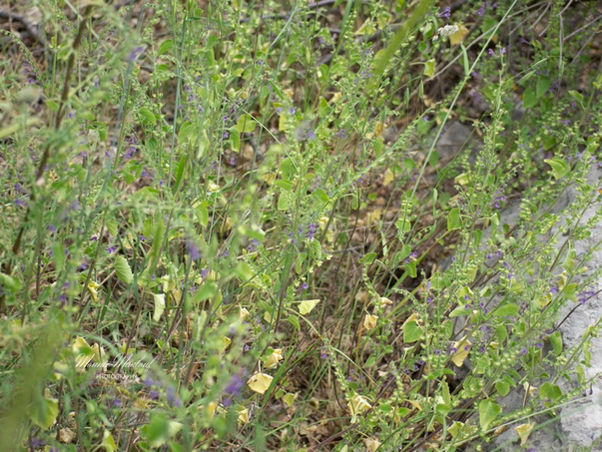Family |
Lamiaceae
Scutellaria brevibracteata
Stapf
Scutellaria brevibracteata Stapf
(Denkschr. Kaiserl. Akad. Wiss., Wien. Math.-Naturwiss. Kl. 50: 99; 1885 – Nouvelle Flore du Liban et de la Syrie, vol. 2, Pl. CLXXIII nº 3; 1969)
• Life-form & habit: Perennial herb 15–40 cm tall, with a woody base and several ascending to erect, quadrangular stems. Stems simple or sparsely branched above, covered with short, fine hairs.
• Leaves: Opposite, ovate to ovate-lanceolate, 10–25 × 5–15 mm, crenate to subentire, base rounded, apex acute; both surfaces green, sparsely pubescent, with more hairs along veins beneath. Petioles short, 2–5 mm.
• Inflorescence & flowers: Terminal racemes or interrupted spikes 3–10 cm long, densely flowered. Bracts shorter than pedicels (hence brevibracteata), ovate, green, often tinged purple. Calyx 3–4 mm, bilabiate, upper lip with a characteristic rounded “scutellum” (shield-like crest) that becomes prominent in fruit. Corolla 10–14 mm, tubular, two-lipped, deep blue to violet; upper lip arched, lower lip trilobed with a broad middle lobe. Stamens 4, didynamous, included; style slender, bifid at apex.
• Fruit: Nutlets 4, ovoid, 1.5–2 mm, brown, finely rugose, enclosed by the persistent calyx.
• Phenology: Flowers from April to June; fruits mature in summer.
• Habitat & elevation: Rocky limestone slopes, open scrub, and montane grasslands, often in sunny, dry habitats between 400 and 1 800 m.
• Lebanese distribution: Recorded by Mouterde from Mount Lebanon and Anti-Lebanon — notably Barouk, Dahr el-Baïdar, Zahlé, Falougha, and Ras Baalbeck; locally common in montane limestone areas.
• Native range: East Aegean Islands, Lebanon, Syria, Palestine, Saudi Arabia, Türkiye (POWO).
• ⚠️ Taxonomic note: A distinctive Levantine–Anatolian species easily recognised by its short bracts, deep blue corollas, and small, dense inflorescences. Sometimes confused with Scutellaria orientalis L., but that species has longer bracts and larger flowers. In Lebanon, S. brevibracteata is typical of dry montane slopes and steppe fringes.








